Gardening for Moths
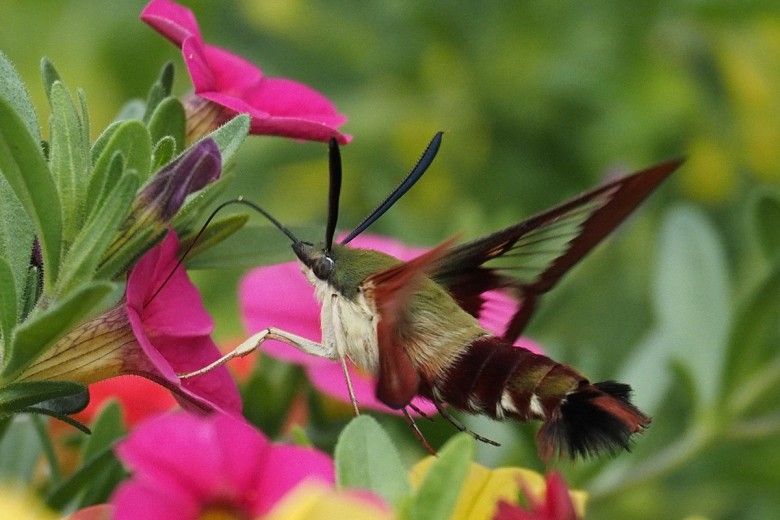
Chances are you probably haven’t given much thought to building a garden for moths. With the majority of moth species performing their duties at night when most humans are sleeping, it’s no surprise that we tend not to think of them as pollinators, hustling to collect nectar and pollen from our gardens under the cover of darkness. In fact, most people probably don’t give moths a second thought, and it’s much easier to get excited about butterflies, many of which are more colorful and part of our warm, sunny, summer days.
We should begin considering moths, though, when landscaping for wildlife. Did you know that:
Moths outnumber butterflies 10:1. Moths and butterflies are in the biological Order Lepidoptera, the second most species-rich order of Insects. Nearly 170,000 species of Lepidoptera have been described in the world with butterflies comprising about 17,500 of those species and moths the remaining 152,500.1
Butterflies evolved from moths and so the case could be made that all butterflies are really moths.
Moths are efficient pollinators. That fuzzy appearance of many moths are thick scales that cover their hefty bodies and wings, allowing pollen to easily adhere.
Caterpillars, the larval stage of moths, are very important as bird food. Baby birds can’t digest hard seeds, but soft caterpillars are easily digested and full of the protein they need.
Moths fuel bats, too! The two share a fascinating evolutionary history that won’t be described here but you can read about it at The Conservation.
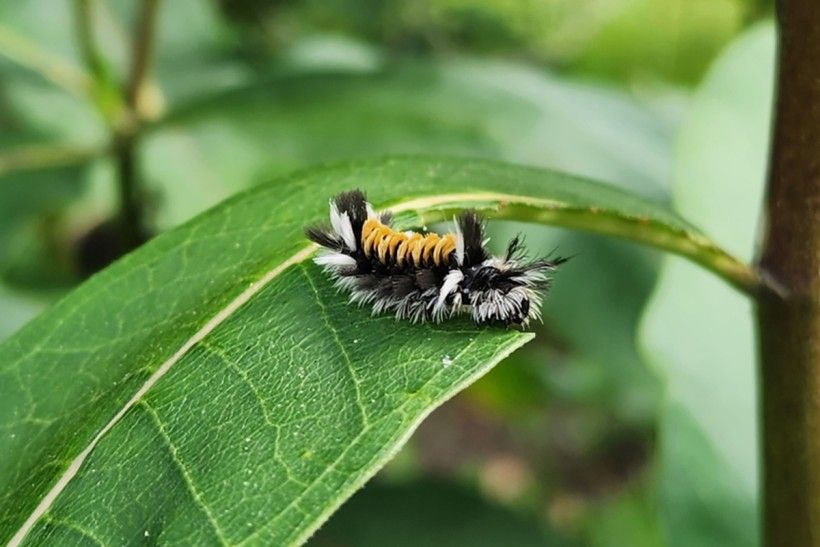
How do you garden for moths? Truthfully, the tactics are nearly identical for gardening for butterflies.
Plant native plants
Native plants and moths co-evolved with many moth species becoming specialized to overcome a plant’s natural defenses, like how monarch butterfly caterpillars (Danaus Plexippus) can feed on milkweeds (Asclepias spp.). Use resources like the Brandywine Native Garden Hub to determine what plants are native to your region and install plants that support a high number of Lepidoptera. Fragrant, light-colored flowers that are easier to find in the dark, such as common milkweed (Asclepias syriaca) and common yarrow (Achillea millefolium) are particularly attractive to moths. You may have heard them called “Moon Gardens.” Plant your flowers close together to add a big pop of color and so insects can efficiently feed and be sheltered.
Stop use of chemicals
As with other insects, moth populations can be greatly diminished by use of insecticides and herbicides that target insects or native “weeds.”
Leave the leaves
Many species of Lepidoptera overwinter in leaf litter. Don’t chop up the leaves either, as you could be mincing cocoons or even adults that spend the winter and spring in the leaves.
Turn off the lights
Outdoor, artificial lights can essentially trap moths and impede their flight patterns. Moths typically keep the brightest object in the night sky—the moon—to their backs, but the glow of artificial lights confuse them. Consider turning off your lights or installing motion sensors.
Observe your garden at night
Simply peruse your landscaping at night with a flashlight to see what is fluttering about. For added fun, use a UV blacklight to inspect trees, shrubs, perennials, and the ground as you look for caterpillars and adult moths, as they fluoresce in the UV light! While you could set up mothing sheets and lights to see what moth species are in your neighborhood, the easiest thing to do is just shine a light on your plants, making sure to check the tops and bottoms of leaves. Consider documenting your finds in a Community Science application like iNaturalist.
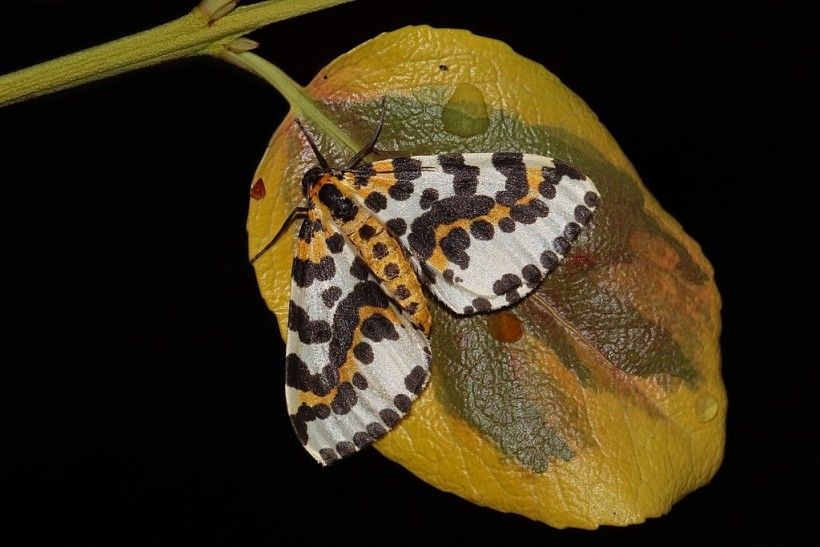
Favorite Native Perennials for Moths
Convinced you should add some natives to your garden with moths in mind? Here are six of our favorite perennials you should consider.
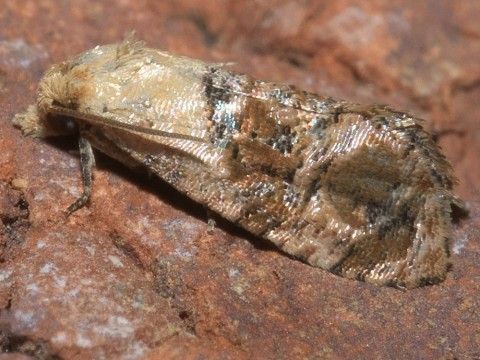
Sunflowers
Species of Helianthus like Helianthus maximiliani or Helianthus helianthoides— commonly called Maximilian Sunflower and Oxeye Sunflower respectively—are “power plants” or, as entomologist and conservationist Doug Tallamy refers to them, “Keystone Plants” for all species of Lepidoptera and are known to support over 120 species. Dozens of moths, including specialists such as the Banded Sunflower Moth (Cochylichroa hospes), utilize our native sunflowers2.
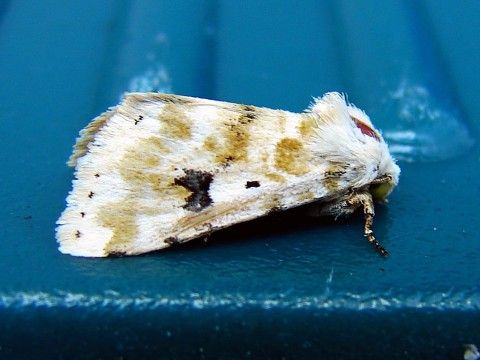
Goldenrods
Not all goldenrods are aggressive like the native Canada goldenrod (Solidago canadensis), and goldenrod does not cause allergies due to its heavy, sticky pollen which prevents it from traveling through the air like ragweed, the likely culprit of your fall sniffles. Solidago species support over 75 species of Lepidoptera, and their late season flowering is vital to many insects. Specialist species that you might attract include the Goldenrod Flower Moth (Schinia nundina), the Beautiful Eucosma Moth (Eucosma formosana), or the Goldenrod Elliptical-Gall Moth (Gnorimoschema gallaesolidaginis), which is a moth whose larvae burrow into goldenrod stems in the spring, causing the plant to develop a gall—a hard, nodule-like growth, in which the larvae feeds and pupates before emerging as an adult in the fall3.
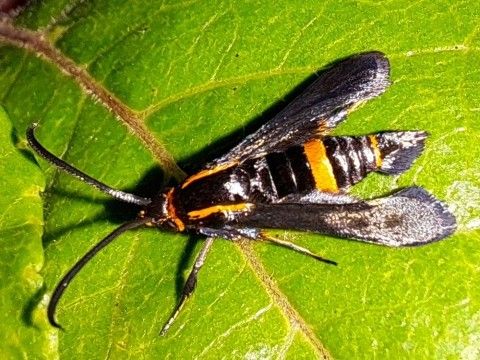
Boneset
Common boneset (Eupatorium perfoliatum) adds a splash of white, which enhances the color of other flowers, in moist gardens. Supportive of over 30 species of Lepidoptera, boneset attracts many generalist species as well as the Boneset Borer (Carmenta pyralidiformis) moth, which upon first glance, is reminiscent of a wasp4.
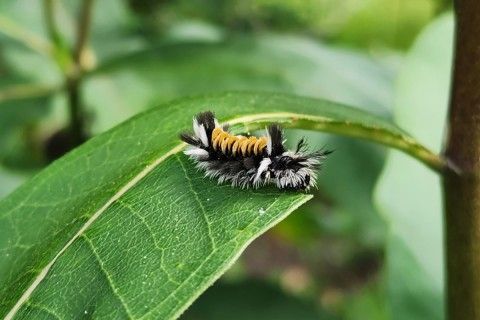
Milkweeds
They’re not just for monarch butterflies! Milkweeds are in the Dogbane (Apocynaceae) family and, according to the USDA Plants Database, there are 11 milkweeds native to Pennsylvania, although red milkweed (Asclepias rubra) and redring milkweed (Asclepias variegate) may have been extirpated from the state. You still have lots of options, so find a few milkweeds that work in your space and plant several of each species to attract a diversity of insects, including the Milkweed Tussock Moth (Euchaetes egle), which are regularly found on milkweeds and are not cause for alarm.

Violets
There are dozens of species of violets, including the Common Blue Violet (Viola sororia) that happily covers untreated lawns with its purple blooms. Perhaps best known as a host plant for the Great Spangled Fritillary butterfly (Speyeria Cybele), violets also support over a dozen moth species, including the showy Giant Leopard Moth (Hypercompe scribonia), whose caterpillar is often mistaken for a “Wooly Worm”5 with its solid black body and reddish rings between its segments.
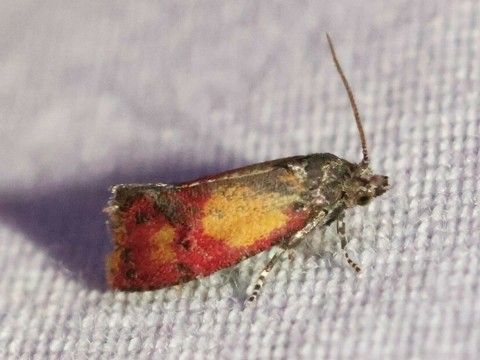
Evening Primroses
Most evening primroses open at dusk and bloom overnight before their blossoms wither by day, indicating that their primary pollinators are those insects that are most active at night. Common evening primrose (Oenothera biennis) is an aggressive plant, but popular among the pollinators! Keep your eyes open for the Primrose Cochylid Moth (Atroposia oentherana), a small, but colorful moth or the Red-streaked Mompha (Mompha eloisella) both of which are primrose specialists6.
Looking for more inspiration for your moth gardening endeavors? The book “Gardening for Moths: A Regional Guide,” written by Jim McCormac and Cheslea Gottfried, is full of plant lists and moth species known to utilize those plants. While its geographic focus nearly coincides with the Ohio River Basin, many of the plants and moths mentioned may be found outside of that area.
Want to learn more? Read about the differences between butterflies and moths in our previous blog post “Butterflies vs Moths: What are the differences?”
1-6: McCormac, Jim and Chelsea Gottfried. Gardening for Moths a regional guide. Ohio University Press, 2023.
Header image photo credit: Michael Palko